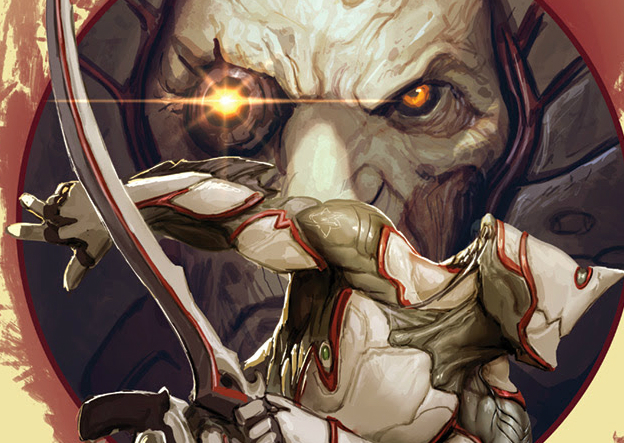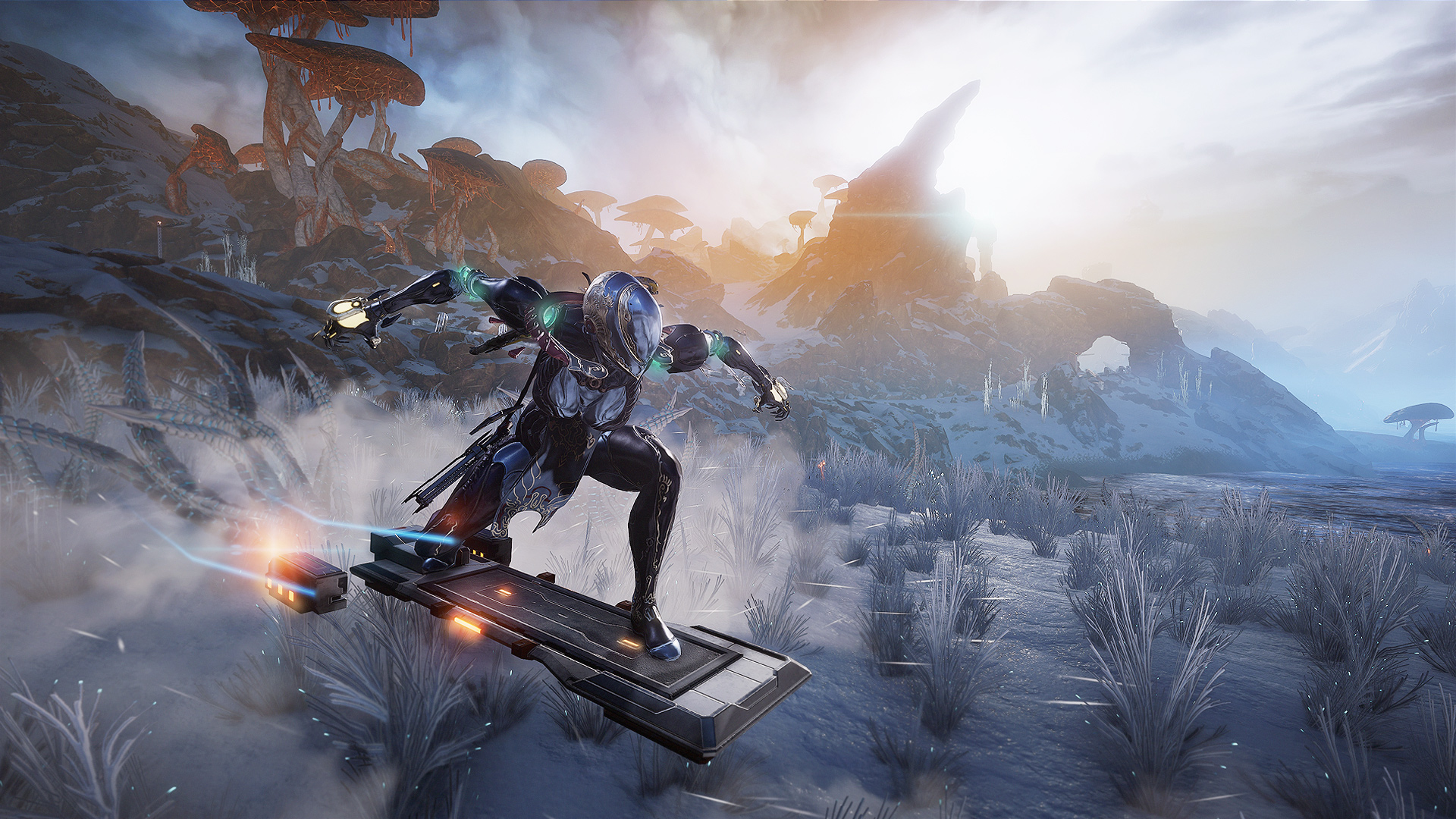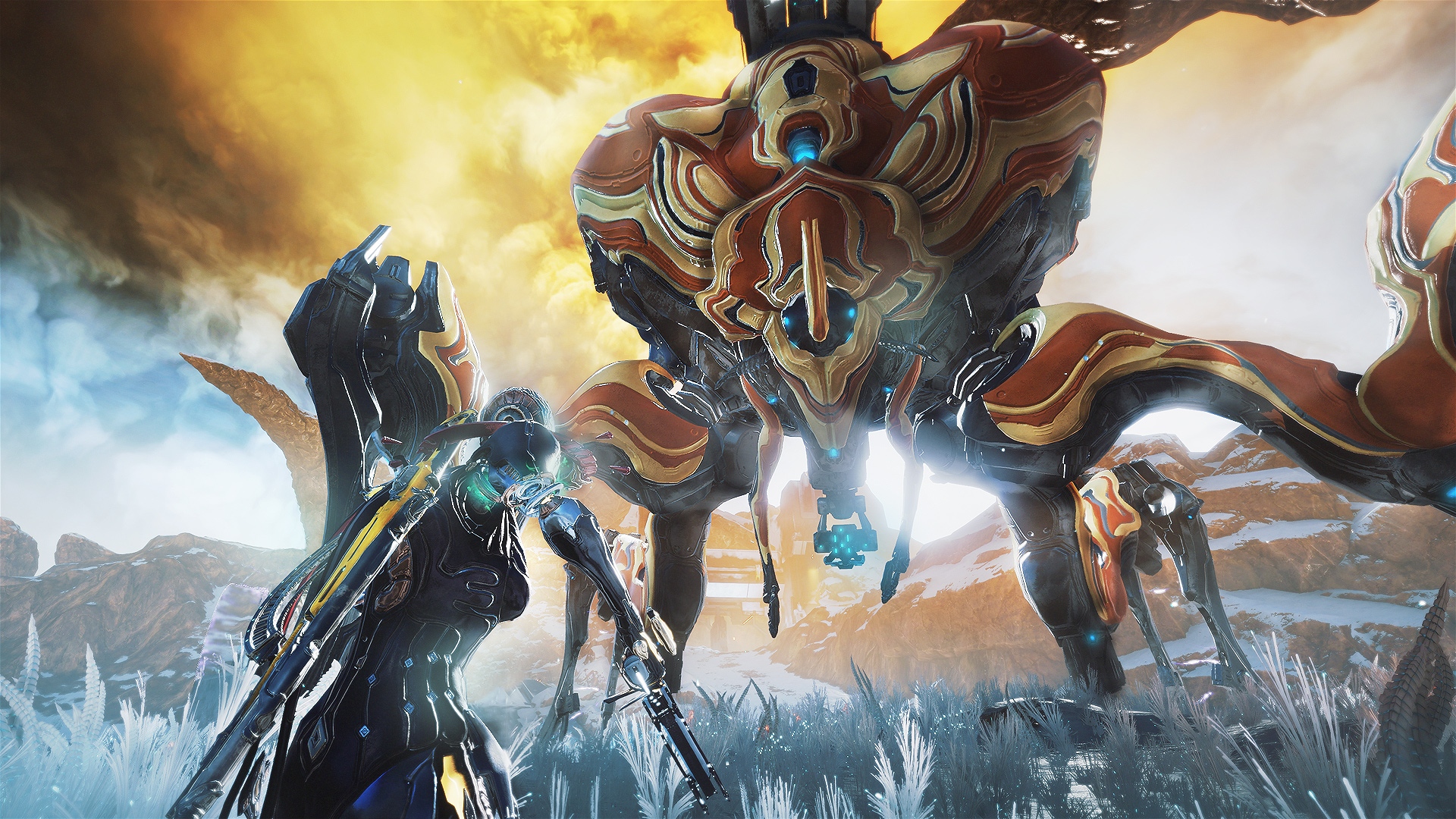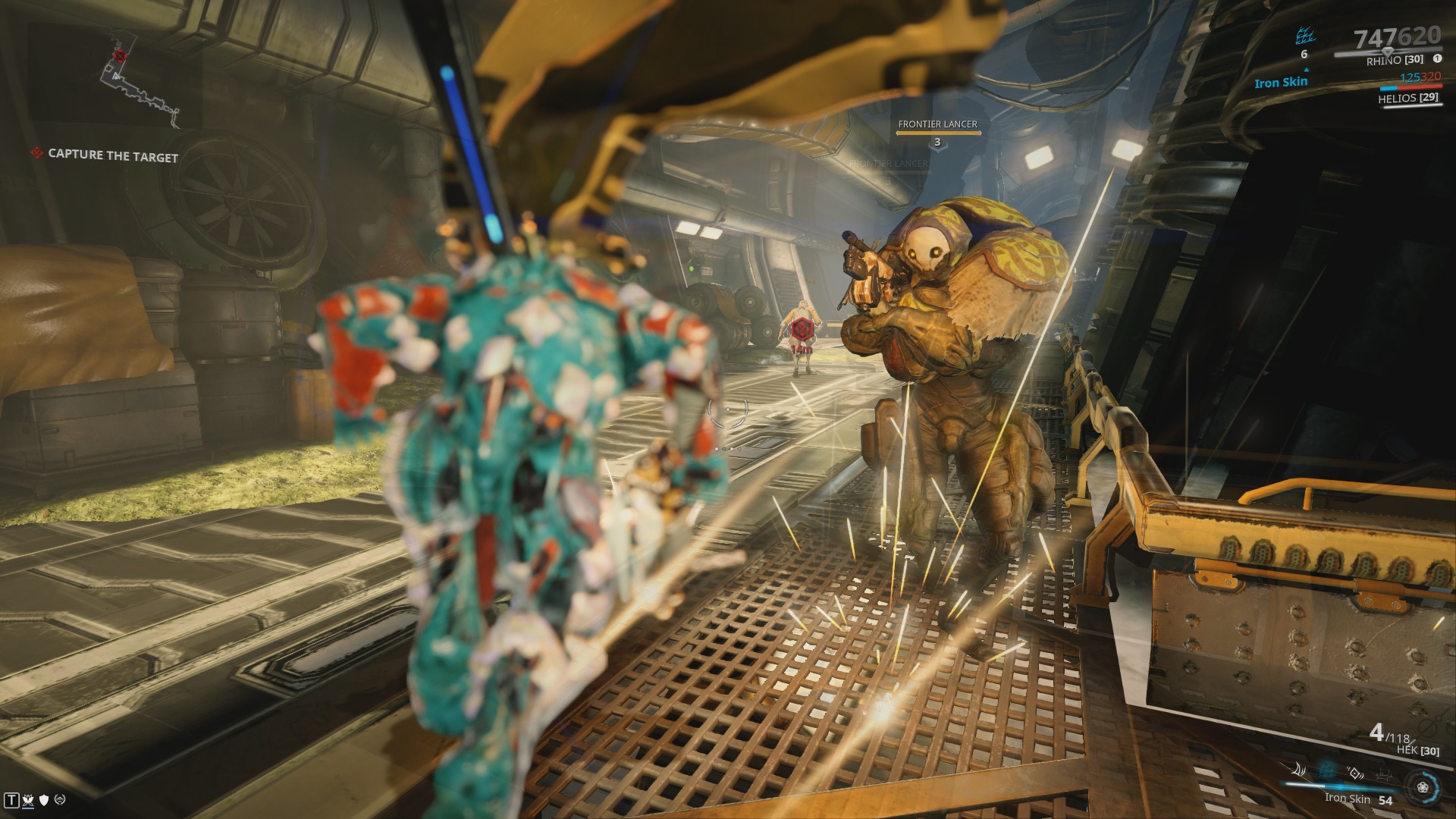Warframe has quietly become the best free-to-play game on PC
Who knew being ambitious and respectful to your audience would pay off?

I wish I could articulate what it was like seeing two thousand people's heads explode when Warframe developer Digital Extremes showed off their upcoming expansion, Railjack. After a 45-minute-long presentation at Tennocon 2018 demoing the impressive open world zone of Venus, Digital Extremes hoodwinked fans with an extensive, surprise look at Railjack's co-op space combat. No one knew it even existed. People lost their shit. At one point, I was seriously concerned the mob of cheering fans might storm the stage. But the audience wasn't angry, they were just so damn excited. I was excited too. Not because Warframe is adding an ambitious new space combat mode that glues its disparate parts together, but because all of this is coming from a free-to-play game that, four years ago, was completely overlooked.
I mean, who doesn't love a good underdog story?
And that's, essentially, what Warframe is. When Digital Extremes first released it in 2013, people immediately wrote it off because it was a free-to-play game. "It was a cuss word at the time," creative director Steve Sinclair joked with me when we spoke before the presentation. "No one even wanted to talk about it." Today, Warframe regularly sits in Steam's top 10 most played games just under esports titans like Dota 2 and trendsetters like PlayerUnknown's Battlegrounds. And, as I found out when I reviewed it two months ago, Warframe absolutely deserves every bit of its success.
Aside from the screams and cheers I witnessed sitting the audience of Tennocon, that success has been oddly quiet though. It's not the result of a single big reveal like Railjack, but years of slow growth, honest dialogue with players, and risk-taking development. And it all contributes to why Warframe is the best free-to-play game on PC.
Study the blade
That moment during Tennocon when community director Rebecca Ford's character piloted a spaceship while her two teammates fired guns, rebuffed invasions, put out fires, and even infiltrated an enemy ship takes context to understand why people lost their minds. For Warframe's long-time fans, the biggest surprises are how dramatically it continues to grow and change.
When it launched in 2013, Warframe was little more than a procedurally generated co-op loot shooter. You played as a cool ninja and ran around cutting up bad guys for resources to craft into gear. That was it. In the five years since, though, Digital Extremes has turned Warframe into what basically amounts to an MMO that easily dwarfs both Destiny games. There's public space stations to hang out and trade items in, customizable dojos for your clan to build, several dozen planets to visit, a massive open world zone to explore—the list goes on.
It seems like there's no idea too big or strange for Warframe
It seems like there's no idea too big or strange for Warframe. The first half of the Tennocon presentation was a long walkthrough of another open world zone on Venus coming later this year. It started with a two-and-a-half minute musical number, of all things. But when Digital Extremes finally showed off new features, like a hoverboard and giant walking robobugs, people were screaming with excitement. To then cap all of that off with a 15-minute surprise live demo that involved seamlessly flying a ship into space and blowing up an enormous enemy capital ship was almost too much for people to comprehend. Take note, E3 press conferences, because Digital Extremes knows how to please an audience.
The biggest gaming news, reviews and hardware deals
Keep up to date with the most important stories and the best deals, as picked by the PC Gamer team.
I love the audacity. Where many game developers are content with just feeding their players more of the same thing, Digital Extremes constantly changes the shape of Warframe to include new—and often very bizarre—features. You can hatch alien dogs that fight alongside you. One warframe comes with a programmable, in-game synthesizer. There's even a parasite that organically spreads between players. Features that work continue to get iterated and improved upon while those that don't are often abandoned, like Warframe's PvP mode.
Each of these little experiments, successful or not, congeal to give Warframe an absolutely unique shape that is hard to describe. What other game can you fish on a tranquil lake one minute and the next minute bullet-time jump through an enemy spaceship in a suit of armor that punches the souls out of people?

Instead of just striving to give players more of what they want, Digital Extremes endeavors to always give them something different at the same time. And, as I'm quickly realizing, it creates an exciting tension where I cannot wait to see what surprises the developer is cooking up. I'm just excited for the future of Warframe as I am to play it, and that's a rare feeling.
Warframe isn't the most coherent game but it is certainly one of the most recklessly ambitious. And considering how honest and communicative its developers are, it's hard not to find that quality endearing. When talking with their audience, you get a sense that Digital Extremes isn't trying to spin the truth or sell something. Their weekly streams are informal and fun peeks behind the development curtain. Yesterday, I discovered some of Sinclair's archived livestreams where he hangs out with viewers on his day off and talks about the technical nitty-gritty of Warframe's development. It's the kind of stream you see from small-time indie developers, not the director of one of the world's most popular games. During one stream, Sinclair even talked about his decade-old dream of making seamless space battles in Warframe and showed off his work in progress—the seed that would eventually become Railjack.
Sinclair's inviting demeanor is a philosophy spread across the entire company. During the VIP breakfast before Tennocon, most of Digital Extremes' developers were chatting away with fans that they obviously had an established relationship with. Warframe wouldn't exist today without the dedication of a few thousand players who stuck through those rough early years, and in watching these conversations it's obvious that Digital Extremes knows it.

Ninja theory
Of course, it also helps that Warframe is damn good too. The parkour combat is kinetic and sublime, and there's a sense of depth to each of its progression systems that is, at first, daunting. Once I got to grips with it, though, I began to see why people routinely sink thousands of hours into Warframe. It elegantly solves one of the bigger problems with MMOs' gear grinds by not treating the grind and the reward as two separate concepts.
In Destiny 2, for example, the moment I get that exotic rifle, I immediately need something new to work for or what's the point of continuing to play? Bungie is continually having to move the goalposts back but is, at the same time, creating 'power creep' as players' stats become wildly disproportionate along the way. It's a treadmill that is completely arbitrary.
Warframe, on the other hand, understands the value of horizontal progression—the idea that variety is the spice of life. Instead of always seeking The Most Powerful Gun, I'm building a vast arsenal of wildly different weapons and warframes that each have extremely long progression curves until they reach their true potential. It's a slow process that turns away those who want more immediate rewards, sure, but I love that I've never logged into Warframe and felt like I had nothing to do. And the game is so fun to play that I don't really mind the slowed pace of progression.
Of course, it's to Digital Extremes' benefit that the grind be as drawn out and as layered as possible. It's easier to monetize it that way. Warframe's microtransactions also set a high standard that other games should aspire to, though. Yes, it's possible to pump a ton of money into the game in exchange for blinged-out gear, but Warframe's upgrade system still means you're going to have to spend the time to level it up and make it good.

Warframe is fearless in its pursuit of new ways to improve and expand while also respecting its audience.
Even the premium currency, Platinum, can be freely exchanged between players. Warframe's bustling player-driven economy uses Platinum almost exclusively, and it's easy enough to earn it by selling items that others want. That means even Warframe's most expensive cosmetics are within grasp of enterprising players who don't want to spend money.
Warframe feels like a near-perfect symbiotic relationship between player and developer. There are definitely some free-to-play annoyances, like having to wait for items to craft and needing to buy inventory slots, but in exchange I get one of the most robust and distinctive online RPGs I've ever played. And the fruit of that give and take is moments like the Railjack reveal, when the dreams of both Warframe fans and its creators are realized in one beautiful instant.
I've spent nearly 200 hours with Warframe so far, but I can see myself spending many, many more. There's parts of it that I love and there's part of it that I hate, but there's no part that I don't feel invested in. I want to know more about its systems. I want to be a part of its community. And that's because Warframe is fearless in its pursuit of new ways to improve and expand while also respecting its audience.
Warframe's success is already impressive but it feels like a much bigger sleeper hit in the making. I get the sense that this is just the beginning. At the end of the Railjack demo, the spaceship the developers were piloting warped off to parts unknown—an on-the-nose foreshadowing that Warframe's next expansions are going beyond the solar system it's called home for years. And, judging by the thousands of cheers from the audience, I suspect their fans are just as excited about the trip as Digital Extremes is. I know I am.
With over 7 years of experience with in-depth feature reporting, Steven's mission is to chronicle the fascinating ways that games intersect our lives. Whether it's colossal in-game wars in an MMO, or long-haul truckers who turn to games to protect them from the loneliness of the open road, Steven tries to unearth PC gaming's greatest untold stories. His love of PC gaming started extremely early. Without money to spend, he spent an entire day watching the progress bar on a 25mb download of the Heroes of Might and Magic 2 demo that he then played for at least a hundred hours. It was a good demo.


